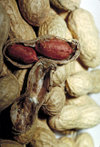In humans, anaphylaxis is a rare event usually triggered by an antiserum (to treat snake or insect bites), antibiotics (especially immunoglobulin), or wasp or bee stings. Certain foods can also trigger these severe reactions, including seafood (particularly shellfish), rice, potatoes, peanuts, egg whites, raw milk, and pinto beans.
In systemic or system-wide cases, symptoms occur just minutes (or in rare cases weeks) after introduction of the foreign substance and include flushed skin, itching of the scalp and tongue, breathing difficulties caused by bronchial spasms or swollen tissues, vomiting, diarrhea, a sudden drop in blood pressure, shock, and loss of consciousness. Less severe cases, usually caused by nonimmunologic mechanisms, may produce widespread hives or severe headache. These less severe cases are called anaphylactoid reactions. Any anaphylactic reaction must be considered a medical emergency and requires immediate professional intervention.
Charles-Robert Richet (1850-1935), a French physiologist, first coined the term to define the puzzling reactions that occurred in dogs following injection of an eel toxin. Instead of acquiring immunity from the toxin as expected, the dogs experienced acute reactions, including often fatal respiratory difficulties, shock, and internal hemorrhaging. While the exact biological process is poorly understood, anaphylaxis is thought to result from antigen-antibody interactions on the surface of mast cells, a connective tissue cell that is believed to contain a number of regulatory chemicals. This interaction damages cell membranes, causing a sudden release of chemicals, including histamine, heparin, serotonin, bradykinin, and other pharmacologic mediators. Once released, these mediators produce the frightening bodily reactions that characterize anaphylaxis.
Because of the severity of these reactions, treatment must begin as soon as possible. The most common emergency treatment involves injection of epinephrine (adrenaline), followed by administration of cortisone, antihistamines, and other drugs that can reduce the effects of the unleashed chemical mediators.
Anaphylactic reactions to food are rare in children, but those who experience them must be taught never to eat that food again. Reading food labels in grocery stores and restaurants and alerting school kitchen personnel are other precautions that help prevent emergencies. In addition, parents need to be aware that vaccines or antibiotics commonly administered to children can in some cases trigger anaphylactic symptoms. It is usually recommended that children remain in the doctor's office near medical care for a period of time after receiving such injections as a precaution.
For people with known reactions to antibiotics, foods, insect and snake bites, or other factors, avoidance of the symptom-inducing agent is the best form of prevention. Anyone, child or adult, who has experienced an anaphylactic episode is advised to wear a Medic Alert bracelet or carry a medical emergency card with them at all times in case of emergency.
Gale Encyclopedia of Childhood & Adolescence. Gale Research, 1998.



